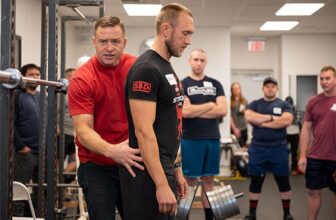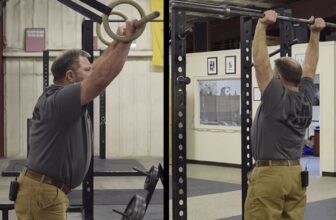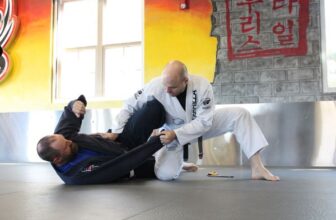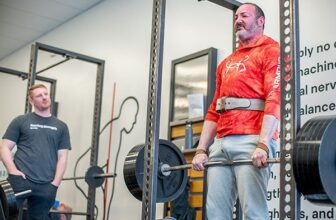
[adinserter block=”2″]
The Squat: Hips are the Key
by Mark Rippetoe | August 02, 2023
We have always taught the
squat as a “hips” exercise – it was presented that way in the
Blue Book, because this approach trains more muscle mass over the
longest effective range of motion, allowing the use of heavier
weights and thus producing the most force against the bar and the
most effective strength adaptation. Squatting down and standing back
up is one of the progressively-trainable bilateral human movement
patterns that comprise the basic exercises of strength training. But
it is not a “quad” exercise.
Bodybuilding is based on
bodypart thinking: quads, hammys, delts, bis, tris, pecs, lats,
traps, and calves. Combine enough exercises for the bodyparts, and
you have a workout. You have “chest day” and “back day” and
“leg day” and “arm day” and “calf day” and “forearms
day” and so on. This is the basis for every machine-based corporate
gym in the industry. Strength training is based on movement patterns
– the things you do with your body, not the muscle groups that look
cool when you pose them when your bodyfat is unnaturally low. What we
do is based on function
– the things the human body has evolved to actually do
– not on its appearance. When we
strengthen the ability to execute a basic movement pattern, like the
squat, we improve the functional capacity of the body.
The squat improves
strength because the entire system of levers
and muscle mass involved in squatting down and standing up is
progressively trainable –
their force-producing function can be improved, while the constituent portions thereof, if
worked separately, are not trainable over time. You can increase the
weight used in a split squat for about 6
weeks, maybe, while the squat itself can be
progressively and incrementally increased for years.
Most competitive powerlifters perform their best totals after 15-20
years of training.
The
bar on your back requires that you support the weight with your
shoulders, and keep the spine stable, so the column of muscle
surrounding the spine grows thicker and stronger as the weight
increases. The fact that you can
fall down with the bar but that you don’t
fall down with the bar means that your ability to balance improves
with your strength, without having made instability an active factor
to overcome every rep.
Separating
basic bilateral movement patterns into subsidiary exercises – like
dumbbell split squats, or single leg anythings, or
ipsilateral/contralateral dumbbell presses on unstable surfaces –
is the basis of the newly-fashionable trend called “Functional
Fitness.” It relies on instability as an exercise variable,
replacing incremental increases in load as the stress. If instability
is designed into the movement, maximum force production cannot be
improved, since your body will not produce maximum force from a
position of instability – you may be stupid, but your body is not.
Stronger
is always better; ask any athlete that competes against strong
opponents, and ask their grandparents if they’d rather be strong
again. Strong athletes are harder to knock off balance, and old
people fall because they are not strong enough to quickly move back
to a position of stability when their balance fails. If strength
cannot be improved, “function” cannot be improved, because the
function of the body is to apply force against external resistances
in the environment. If the production of force is not the primary
limiting factor, it will not be the primary adaptation.
And
here’s the main point: if the primary human movement pattern
exercises get stronger, so do the derivative and subsidiary
exercises. What happens to your dumbbell split squat if your actual
squat goes from 135 to 405? So, I think I will reclaim the term
“functional” and use it as the dictionary suggests – actual
strength training is functional
training,
and dancing around on one leg with little dumbbells in the weight
room is a form of masturbation: making yourself feel good without
really getting anything done.
Hips
Decades of experience with
the squat has taught us that the key to squatting big weights most
effectively and efficiently is thinking about the hips. Not
the knees. Knees
are obviously involved since you cannot “squat” down and stand
back up without them. So the muscles that operate the knees get
trained as the weight on the squat goes up over time. But thinking
about the squat like it’s a leg press is not productive – thinking
about lowering your hips to a below-parallel position and then
shoving your ass straight up in the air is the most productive way to
mentally structure the movement pattern.
And
really, your knees are among the shittiest joints in the body. They
are very directional, not very tolerant of lateral or axial shifting,
and the cartilage arrangement is a vestige of the more-controlled
environment of quadrupedalism. How many people do you know over the
age of 45 who do not
have a knee problem? The nicer you are to your knees, the longer they
will work correctly.
So
I’m suggesting that you learn to squat with your hips, and invite
your knees along for the ride. This involves the simple manipulation
of the basic angles between the major segments of the body: the back,
the thighs, and the shanks, and the angles between them – the back
angle (more vertical or horizontal), the hip angle (more open or
closed), and the knee angle (more open or closed). Given that the bar
must remain over the middle of the foot for the system to remain in
balance, a hips-driven squat will show a more horizontal back, and a
resulting closed hip angle and open knee angle.
Squatting
with your hips involves learning to bend over and shove your ass
back, pointing your nipples at the floor, holding your shins more
vertical on the way down, shoving your knees out so your thighs are
out of the way, and then driving your ass up out of the bottom
without lifting your chest until the very top of the squat. Yes, you
have to think about what you’re doing with a heavy weight on your
back, but that’s what warmups are for, so plan on using them to
practice this.
The
primary value of this analysis is twofold. First, it’s
correct, as
a critical review of heavy squat videos will demonstrate (light
weights can be squatted inefficiently, so they won’t help). Hip drive
gets all heavy squats out of the bottom, even if your coach tells you
otherwise. Look for yourself – it becomes quite obvious if you
study the videos of heavy squats. Even heavy front squats and
overhead squats out of the bottom of a snatch are initiated with the
hips. And second, it is incredibly helpful to be able to focus on a
single movement cue that actually helps you lift the weight while
you’re under the bar: “Shove your ass up out of the bottom.”
Learn to squat with your hips, and see how many problems it solves.
[adinserter block=”2″]
Credit : Source Post






